Akashic Books asked 20 different book blogs to each review one story from Joe Meno’s collection Demons in the Spring, which was published earlier this year in paperback. I chose to review “Art School Is Boring So.” The story was illustrated by Steph Davidson.
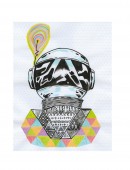 Meno wastes no time establishing the informal, disaffected attitude of this story’s protagonist: “Art school is boring so Audrey wears a space helmet around: It is kind of pretentious but so what.”
Meno wastes no time establishing the informal, disaffected attitude of this story’s protagonist: “Art school is boring so Audrey wears a space helmet around: It is kind of pretentious but so what.”
The helmet was an art project, but Audrey wears it now mostly so she doesn’t have to hear her “slutbag” roommate, Isobel, having sex in the next room over. Isobel is a dancer who has posted naked pictures of herself online, the extroverted opposite of Audrey, who sullenly walks around planning to make various zines, one of which involves the fictional solid waste of celebrities: “She has at least a thousand different ideas for zines she could do: One might be about Hall & Oates, one could be about sea horses, one about how she is starting to like soul music, and one all about fireworks. The problem is, well, she just hasn’t had time to start any of them.”
Audrey is a daydreamer, though her imaginings are blunt, not particularly . . . imaginative. She shows interest in the people around her, including an old Japanese couple that lives next door, but her emotional range is mostly limited to her own pedestrian internal concerns about art and boys. She seems capable of being funny or clever on occasion with others, but Meno mostly positions her as a sad cliche:
Like everyone else in art school, she hates U.S. imperialism. She hates mass production but she secretly likes Britney Spears. . . . She hates all the white leather belts she sees people wearing but wears one anyway. She hates that all modern art has to be explained. She hates the kind of drawings she makes because she cannot draw people’s faces. She hates that her parents are rich and she hates that she hates them for being rich.”
This is not to say the story is unsuccessful. Meno accurately depicts the type of young person turned off by who knows what — unloving parents, too much cultural noise, the communicative restrictions of social networks. As an exercise in sketching character, “Art School Is Boring So” works, but given the limits of that character’s complexity and charms, there is something necessarily limited about the story.
It seems almost certain that Meno is hoping to elicit some minimum of sympathy for Audrey. And there is something naive, lonely, and sad about her, much like the artwork that accompanies the story. She is more pathetic than repellent. But some characters in stories, even those who are pathetic or worse, can be easily imagined in a longer work, where a reader would gladly follow them for a while. Audrey, for this reader, is very much not one of those characters. She is a well drawn but somewhat irritating presence, effectively summed up in these few pages.

 I’ve always assumed I would dislike the work of Michel Houellebecq, not just because
I’ve always assumed I would dislike the work of Michel Houellebecq, not just because 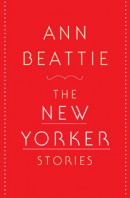 Judith Shulevitz
Judith Shulevitz 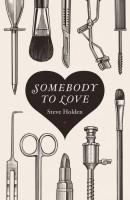 Dan Wagstaff
Dan Wagstaff  Jaimy Gordon’s
Jaimy Gordon’s 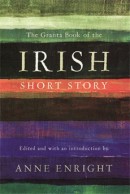 Upon the publication of a new anthology of Irish short stories (to be published in the U.S. in March),
Upon the publication of a new anthology of Irish short stories (to be published in the U.S. in March),  On the 100th anniversary of Leo Tolstoy’s death, The Atlantic
On the 100th anniversary of Leo Tolstoy’s death, The Atlantic 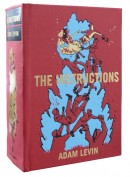 I don’t know if you’ve seen Adam Levin’s debut novel, The Instructions, in stores yet, but it is a monster, the thickest brick of a book that I’ve seen in some time. Maud Newton says it’s worth the possible back pain
I don’t know if you’ve seen Adam Levin’s debut novel, The Instructions, in stores yet, but it is a monster, the thickest brick of a book that I’ve seen in some time. Maud Newton says it’s worth the possible back pain 